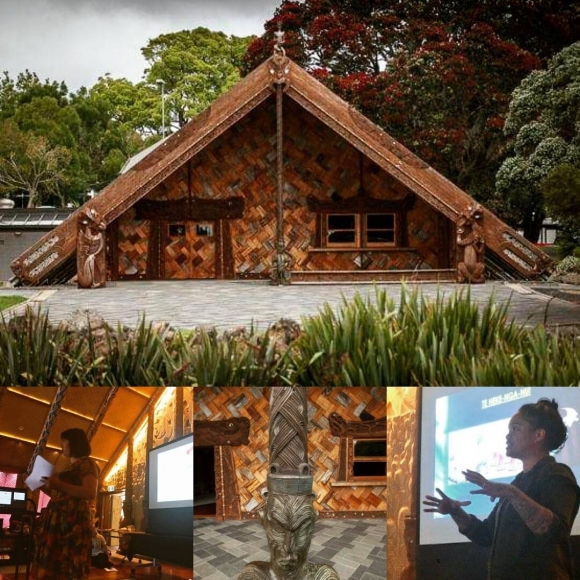13 Dec Co-creation, Co-design and Innovation!
Māori co-design enthusiasts from across the motu gathered at Te Noho Kotahitanga Marae last Thursday to wānanga around the application of co-design to drive mātauranga Māori approaches within kaupapa Māori environments.
The inaugural Tikanga Māori Co-Design Wananga was a collaborative event between Toi Tangata and Nga Aho, who have both actively supported and championed the use of co-design approaches to reduce, remove and eliminate negative health outcomes for Māori.
Among the host of researchers and practitioners, a wide range of discussions emerged around cooperative design. Toi Tangata’s Crystal Pekepo, Community Research and Co-Design Specialist, presented a metaphoric model of Te Hekenganui, a navigational tool she has used as part of the Healthier Lives Challenge lead by researchers of Auckland, Massey and Otago Universities. This model was used for community approach to hauora, which frames co-design models for Māori communities that stimulates thinking and enables creativity through the process of interpretation.

“This was a great opportunity to acknowledge a Māori approach from the start, rather than coming back to it later. As Māori, we have intrinsically operated in this way and this hui is the platform to share it with others,” said Crystal.
Sophia Beaton, from Lifewise, drew on the theme of intention in her korero and spoke of her inspirational work alongside Māori homelessness. She highlighted the outcomes of her mahi which included the creation of wonderful leaders who now share insights of their life experiences.
Angie Tangaere, from the Southern Initiative, spoke on what drives agency and inspired participants to aspire towards a more whānau centric approach to enable both a shared understanding and participation from whānau, a practice she has successfully engaged with in her project Early Years in South Auckland.
The concept of Māori advancement, as opposed to the habitual term of Māori development, was delivered by Mihi Tibble, whose idea of social return vs commercial return was one she incorporates in her role as a Community Engagement Manager at the Tamaki Regeneration Company using co design with mana whenua.
Anaru Ah Kew and Alex Whitcombe, of Healthy Families Manukau, also jointly delivered an outstanding approach to their co-design project around Auahi Kore, which incorporated guiding principles utilising a metaphoric model of a turtle and its journey and aligning it with a whanau journey.
By the end of the wānanga, it was clear that participation and co-creation have become essential features of design and research in many public-sector areas. It prompted critical questions around the goals and practices of involving people in diverse aspects of developing, redesigning and using co-design to inform service delivery practice.
Key points that were taken away from the wānanga highlighted the need for new perspectives on the values, characteristics, politics, and future forms of co-design and encouraged critical and constructive reflections about co-design as a past, present and future.
Toi Tangata would like to take the opportunity to thank Rangimārie Mules, Desna Whaanga-Schollum and the Ngā Aho whānau for hosting such an influential wānanga. Mauri Ora!
Nā Crystal Pekepo
Image courtesy of Rangimarie Mules



